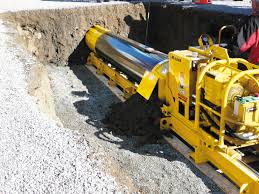In today’s infrastructure-driven world, underground utility installation is a crucial part of modern development. Whether it’s laying water mains, sewer lines, electrical conduits, or telecommunications cables, trenchless methods are increasingly favored due to their minimal surface disruption and cost-effectiveness. Among these, auger boring equipment plays a central role in horizontal underground boring, especially for shorter to medium-length, straight-line installations.
However, choosing the right auger boring equipment is not always straightforward. The success of your boring project—both in terms of efficiency and final outcome—depends significantly on matching the equipment to your specific project conditions. This article provides a comprehensive guide on how to evaluate, select, and use auger boring equipment tailored to your project needs.
What Is Auger Boring Equipment?
Auger boring equipment is used in horizontal earth boring to install steel casing under roads, railways, or other obstacles without disturbing the surface. The system works by rotating a helical auger inside a steel casing, simultaneously boring the ground and advancing the casing forward.
The equipment typically includes:
- A boring machine frame (also called the track or base)
- Drive units with hydraulic or mechanical motors
- Auger sections (screw conveyors)
- Cutting heads suited for the soil type
- Casing pipes and guiding systems
This setup makes auger boring equipment ideal for accurate, straight-line bores, typically ranging from 4 inches to over 60 inches in diameter, depending on the system.
Key Factors to Consider When Choosing Auger Boring Equipment
1. Project Scope and Diameter Requirements
The size of the bore—both in length and diameter—is the most critical factor in selecting the right equipment. Smaller auger boring machines are perfect for utility bores under roads or driveways, while large rigs are capable of installing wide casings over long distances.
- Small-Diameter Equipment: Best for service laterals, electrical or fiber conduits (4″ to 12″)
- Mid-Range Equipment: Suitable for water, gas, and sewer mains (12″ to 36″)
- Large-Diameter Equipment: Designed for major pipeline installations (36″ and above)
Make sure the auger boring equipment you choose can support the diameter and wall thickness of the casing required by your project.
2. Soil and Ground Conditions
Different types of soil and subsurface materials require different boring strategies. Auger boring equipment must be chosen based on how it will perform in specific geotechnical conditions:
- Soft soils (clay, sand, silt): Most auger boring systems can operate effectively, although sloughing may occur in looser formations.
- Cohesive soils (dense clay): Requires higher torque and specific cutter head designs to maintain line and grade.
- Rocky or cobble-laden ground: May demand a guided boring system or additional tooling like rock-cutting heads or pilot tubes.
- Wet or unstable soils: Consider machines with enhanced support systems and pressure management.
Performing a proper geotechnical investigation before equipment selection is essential to avoid underpowered machines or expensive delays.
3. Bore Length and Line Accuracy
While auger boring excels in short to mid-length, straight-line bores, not all equipment is suited for precise guidance over long distances. If your project requires tight line and grade control, particularly over 100 feet, consider:
- Pilot tube-guided systems
- Steering heads and laser guidance technology
- Grade monitoring systems
If your project cannot tolerate deviation, investing in an auger boring system with integrated guidance features is worth the additional cost.
4. Jobsite Access and Working Space
The physical size and weight of auger boring equipment vary significantly between models. Before selecting a machine, assess the working envelope:
- Is there enough space to set up the machine and casing pipe?
- Are there height or length restrictions for transport and setup?
- What are the safety clearance requirements for your team?
Compact machines are more suitable for urban or residential environments with tight access. Larger jobsites can accommodate high-capacity rigs with full accessories and extended reach.
5. Power Requirements and Compatibility
Auger boring equipment is typically powered hydraulically or mechanically, with power units ranging from 50 HP to over 300 HP. It’s important to match your equipment to available power sources and check for:
- Engine type (diesel, electric, etc.)
- Hydraulic pressure and flow rates
- Compatibility with your existing support equipment (cranes, excavators, etc.)
Don’t overlook the support systems, including lubrication, slurry removal, and spoil handling tools, all of which can impact productivity and cost.
6. Safety Features and Compliance
A critical yet often overlooked component in equipment selection is operator safety and jobsite compliance. Look for auger boring equipment that includes:
- Emergency shutoffs
- Protective covers for rotating components
- Anti-slippage footplates
- Noise and vibration controls
Additionally, ensure the equipment adheres to all local and international safety standards, including OSHA requirements and environmental regulations.
Buying vs. Renting Auger Boring Equipment
Depending on your budget, frequency of use, and storage capacity, you may choose to either rent or purchase auger boring equipment.
- Renting is ideal for one-off or occasional projects. It offers flexibility and access to the latest models without capital expenditure.
- Purchasing is better for contractors with recurring underground boring needs. It ensures availability, customization, and long-term cost savings.
Work with a reputable supplier who offers both options and can provide training, spare parts, and service support.
Final Thoughts
Choosing the right auger boring equipment is about more than matching specifications. It requires a deep understanding of your project’s technical needs, soil conditions, logistics, and budget constraints. The right system will not only complete the job efficiently but also reduce risks, ensure safety, and increase overall project profitability.
